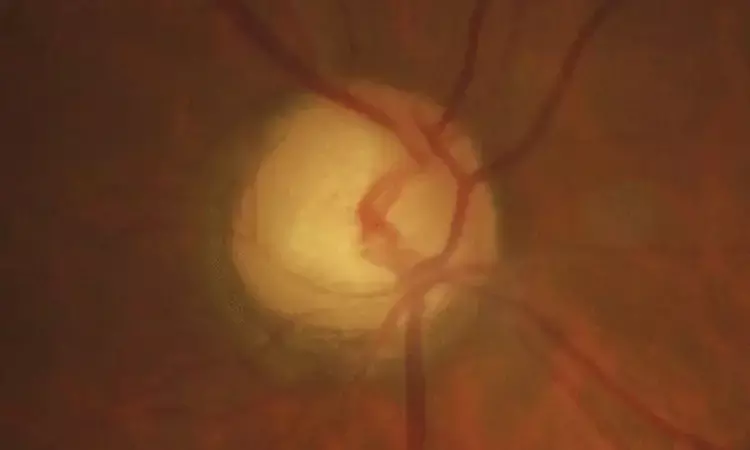- Home
- Medical news & Guidelines
- Anesthesiology
- Cardiology and CTVS
- Critical Care
- Dentistry
- Dermatology
- Diabetes and Endocrinology
- ENT
- Gastroenterology
- Medicine
- Nephrology
- Neurology
- Obstretics-Gynaecology
- Oncology
- Ophthalmology
- Orthopaedics
- Pediatrics-Neonatology
- Psychiatry
- Pulmonology
- Radiology
- Surgery
- Urology
- Laboratory Medicine
- Diet
- Nursing
- Paramedical
- Physiotherapy
- Health news
- Fact Check
- Bone Health Fact Check
- Brain Health Fact Check
- Cancer Related Fact Check
- Child Care Fact Check
- Dental and oral health fact check
- Diabetes and metabolic health fact check
- Diet and Nutrition Fact Check
- Eye and ENT Care Fact Check
- Fitness fact check
- Gut health fact check
- Heart health fact check
- Kidney health fact check
- Medical education fact check
- Men's health fact check
- Respiratory fact check
- Skin and hair care fact check
- Vaccine and Immunization fact check
- Women's health fact check
- AYUSH
- State News
- Andaman and Nicobar Islands
- Andhra Pradesh
- Arunachal Pradesh
- Assam
- Bihar
- Chandigarh
- Chattisgarh
- Dadra and Nagar Haveli
- Daman and Diu
- Delhi
- Goa
- Gujarat
- Haryana
- Himachal Pradesh
- Jammu & Kashmir
- Jharkhand
- Karnataka
- Kerala
- Ladakh
- Lakshadweep
- Madhya Pradesh
- Maharashtra
- Manipur
- Meghalaya
- Mizoram
- Nagaland
- Odisha
- Puducherry
- Punjab
- Rajasthan
- Sikkim
- Tamil Nadu
- Telangana
- Tripura
- Uttar Pradesh
- Uttrakhand
- West Bengal
- Medical Education
- Industry
Ex-PRESS Implantation versus Trabeculectomy for Long-Term Maintenance in Patients with Open-Angle Glaucoma

Filtering surgery is widely employed in the treatment of glaucoma with uncontrollable intraocular pressure (IOP). Currently, the most popular filtering surgery is trabeculectomy (TLE), in which aqueous humor filtration is enhanced and the IOP is reduced by creating a scleral flap that leads to bleb formation in the conjunctiva. The success and complication rates for TLE are well established.
The Ex-PRESS glaucoma filtration device (Alcon Laboratories, Fort Worth, TX, USA) was introduced as a modification to TLE. Although its surgical procedure and postoperative management are similar to those of TLE, ExPRESS (EXP) surgery does not require sclerectomy or iridectomy. Therefore, postoperative inflammation and hemorrhage may be reduced. Both surgical procedures can achieve comparable IOP reductions with few complications when the target pressure is set to 18 mmHg. However, the optimal target IOP for glaucoma treatment depends on the disease stage, IOP before treatment, age, and other risk factors. Generally, to maintain visual function, more severe glaucoma requires lower IOP post-surgery.
The success of TLE depends on the preoperative IOP, history of previous surgery, number of preoperative medications, and race. A high incidence of normal-tension glaucoma (NTG) was reported in the Japanese population and visual field impairment in patients with NTG often progresses even when IOP is within the normal range. Therefore, patients with NTG may benefit from a postoperative target pressure below that of patients with higher preoperative IOP. This study compared the efficacy and safety of EXP to TLE to achieve target postoperative IOPs of ≤18, ≤15, and ≤12 mmHg, each representing reductions of at least 20% below the baseline, among Japanese patients with open-angle glaucoma (OAG, including exfoliation glaucoma and primary OAG).
Patients were randomly assigned to receive EXP or TLE. Surgical success was defined according to three target mean IOP ranges (5 mmHg ≤ IOP ≤ 18 mmHg [criterion A], 5 mmHg ≤ IOP ≤ 15 mmHg [criterion B], and 5 mmHg ≤ IOP ≤ 12 mmHg [criterion C]) representing reductions of at least 20% below the baseline on two consecutive follow-up visits 3 months postsurgery, with or without antiglaucoma medication and without further glaucoma surgery. Participants were divided into three subgroups based on baseline mean deviation (MD) values: early (MD ≥ −6 dB), moderate (−6 dB > MD ≥ −12 dB), and advanced (−12 dB > MD). Survival rates were calculated by subgroup.
A total of 73 patients, including 30 in the EXP group and 43 in the TLE group, were included in the study. No significant differences in baseline ocular or demographic characteristics were found between the two groups. No significant difference in IOP was noted every 6 months.
After the 3-year follow-up, success rates were A) 60.0% and 60.2%, B) 45.7% and 58.1%, and C) 31.5% and 40.5% for the EXP and TLE groups, respectively. Moreover, there was no difference in success rate based on glaucoma level. Many glaucoma medications administered before surgery were associated with a higher failure rate in the TLE group but not in the EXP group.
In conclusion, no differences in surgical success, IOP, VA, and failure rates were found between the EXP and TLE groups. In addition, the results indicated that the number of glaucoma medications was a risk factor for surgical failure with TLE but not with EXP.
Source: Kana Tokumo, Naoki Okada, Hiromitsu Onoe; Clinical Ophthalmology 2023:17 2525–2537
Dr Ishan Kataria has done his MBBS from Medical College Bijapur and MS in Ophthalmology from Dr Vasant Rao Pawar Medical College, Nasik. Post completing MD, he pursuid Anterior Segment Fellowship from Sankara Eye Hospital and worked as a competent phaco and anterior segment consultant surgeon in a trust hospital in Bathinda for 2 years.He is currently pursuing Fellowship in Vitreo-Retina at Dr Sohan Singh Eye hospital Amritsar and is actively involved in various research activities under the guidance of the faculty.
Dr Kamal Kant Kohli-MBBS, DTCD- a chest specialist with more than 30 years of practice and a flair for writing clinical articles, Dr Kamal Kant Kohli joined Medical Dialogues as a Chief Editor of Medical News. Besides writing articles, as an editor, he proofreads and verifies all the medical content published on Medical Dialogues including those coming from journals, studies,medical conferences,guidelines etc. Email: drkohli@medicaldialogues.in. Contact no. 011-43720751


